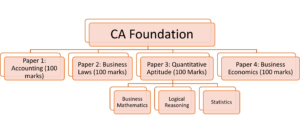What is Candlestick? Basics of Technical Analysis
A candlestick is a type of price chart used in technical analysis that displays the high, low, open, and closing prices of a security for a specific period. It originated from Japanese rice merchants and traders to track market prices and daily momentum hundreds of years before becoming popularized globally. The wide part of the candlestick is called the “real body” and tells investors whether the closing price was higher or lower than the opening price (black/red if the stock closed lower, white/green if the stock closed higher).
KEY TAKEAWAYS
- Candlestick charts display the high, low, open, and closing prices of a security for a specific period.
- Candlesticks originated from Japanese rice merchants and traders to track market prices and daily momentum hundreds of years before becoming popularized in the United States.
- Candlesticks can be used by traders looking for chart patterns.

The candlestick’s shadows show the day’s high and low and how they compare to the open and close. A candlestick’s shape varies based on the relationship between the day’s high, low, opening and closing prices.
Candlesticks reflect the impact of investor sentiment on security prices and are used by technical analysts to determine when to enter and exit trades. Candlestick charting is based on a technique developed in Japan in the 1700s for tracking the price of rice. Candlesticks are a suitable technique for trading any liquid financial asset such as stocks, foreign exchange and futures.
Long white/green candlesticks indicate there is strong buying pressure; this typically indicates price is bullish. However, they should be looked at in the context of the market structure as opposed to individually. For example, a long white candle is likely to have more significance if it forms at a major price support level. Long black/red candlesticks indicate there is significant selling pressure. This suggests the price is bearish. A common bullish candlestick reversal pattern, referred to as a hammer, forms when price moves substantially lower after the open, then rallies to close near the high. The equivalent bearish candlestick is known as a hanging man. These candlesticks have a similar appearance to a square lollipop, and are often used by traders attempting to pick a top or bottom in a market.
Two-Day Candlestick Trading Patterns
There are many short-term trading strategies based upon candlestick patterns. The engulfing pattern suggests a potential trend reversal; the first candlestick has a small body that is completely engulfed by the second candlestick. It is referred to as a bullish engulfing pattern when it appears at the end of a downtrend, and a bearish engulfing pattern at the conclusion of an uptrend. The harami is a reversal pattern where the second candlestick is entirely contained within the first candlestick and is opposite in color. A related pattern, the harami cross has a second candlestick that is a doji; when the open and close are effectively equal.
Three-Day Candlestick Trading Patterns
An evening star is a bearish reversal pattern where the first candlestick continues the uptrend. The second candlestick gaps up and has a narrow body. The third candlestick closes below the midpoint of the first candlestick. A morning star is a bullish reversal pattern where the first candlestick is long and black/red-bodied, followed by short candlestick that has gapped lower; it is completed by a long-bodied white/green candlestick that closes above the midpoint of the first candlestick.
- Candlestick patterns, which are technical trading tools, have been used for centuries to predict price direction.
- There are various candlestick patterns used to determine price direction and momentum, including three line strike, two black gapping, three black crows, evening star, and abandoned baby.
- However, it’s worth noting that many signals emitted by these candlestick patterns might not work reliably in the modern electronic environment.
Candlestick Pattern Reliability
Not all candlestick patterns work equally well. Their huge popularity has lowered reliability because they’ve been analyzed by hedge funds and their algorithms. These well-funded players rely on lightning-speed execution to trade against retail investors and traditional fund managers who execute technical analysis strategies found in popular texts.
In other words, hedge fund managers use software to trap participants looking for high-odds bullish or bearish outcomes. However, reliable patterns continue to appear, allowing for short- and long-term profit opportunities.
Here are five candlestick patterns that perform exceptionally well as precursors of price direction and momentum. Each works within the context of surrounding price bars in predicting higher or lower prices. They are also time-sensitive in two ways:
- They only work within the limitations of the chart being reviewed, whether intraday, daily, weekly or monthly.
- Their potency decreases rapidly three to five bars after the pattern has completed.
Candlestick Performance
This analysis relies on the work of Thomas Bulkowski, who built performance rankings for candlestick patterns in his 2008 book, “Encyclopedia of Candlestick Charts.”2 He offers statistics for two kinds of expected pattern outcomes:
- reversal – Candlestick reversal patterns predict a change in price direction
- continuation – Continuation patterns predict an extension in the current price direction.
In the following examples, the hollow white candlestick denotes a closing print higher than the opening print, while the black candlestick denotes a closing print lower than the opening print.

The bullish three line strike reversal pattern carves out three black candles within a downtrend. Each bar posts a lower low and closes near the intrabar low. The fourth bar opens even lower but reverses in a wide-range outside bar that closes above the high of the first candle in the series. The opening print also marks the low of the fourth bar. According to Bulkowski, this reversal predicts higher prices with an 83% accuracy rate.
Two Black Gapping

The bearish two black gapping continuation pattern appears after a notable top in an uptrend, with a gap down that yields two black bars posting lower lows. This pattern predicts that the decline will continue to even lower lows, perhaps triggering a broader-scale downtrend. According to Bulkowski, this pattern predicts lower prices with a 68% accuracy rate.
Three Black Crows
The bearish three black crows reversal pattern starts at or near the high of an uptrend, with three black bars posting lower lows that close near intrabar lows. This pattern predicts that the decline will continue to even lower lows, perhaps triggering a broader-scale downtrend. The most bearish version starts at a new high (point A on the chart) because it traps buyers entering momentum plays. According to Bulkowski, this pattern predicts lower prices with a 78% accuracy rate.

Evening Star
The bearish evening star reversal pattern starts with a tall white bar that carries an uptrend to a new high. The market gaps higher on the next bar, but fresh buyers fail to appear, yielding a narrow range candlestick. A gap down on the third bar completes the pattern, which predicts that the decline will continue to even lower lows, perhaps triggering a broader-scale downtrend. According to Bulkowski, this pattern predicts lower prices with a 72% accuracy rate.

Abandoned Baby
The bullish abandoned baby reversal pattern appears at the low of a downtrend, after a series of black candles print lower lows. The market gaps lower on the next bar, but fresh sellers fail to appear, yielding a narrow range doji candlestick with opening and closing prints at the same price. A bullish gap on the third bar completes the pattern, which predicts that the recovery will continue to even higher highs, perhaps triggering a broader-scale uptrend. According to Bulkowski, this pattern predicts higher prices with a 49.73% accuracy rate.







